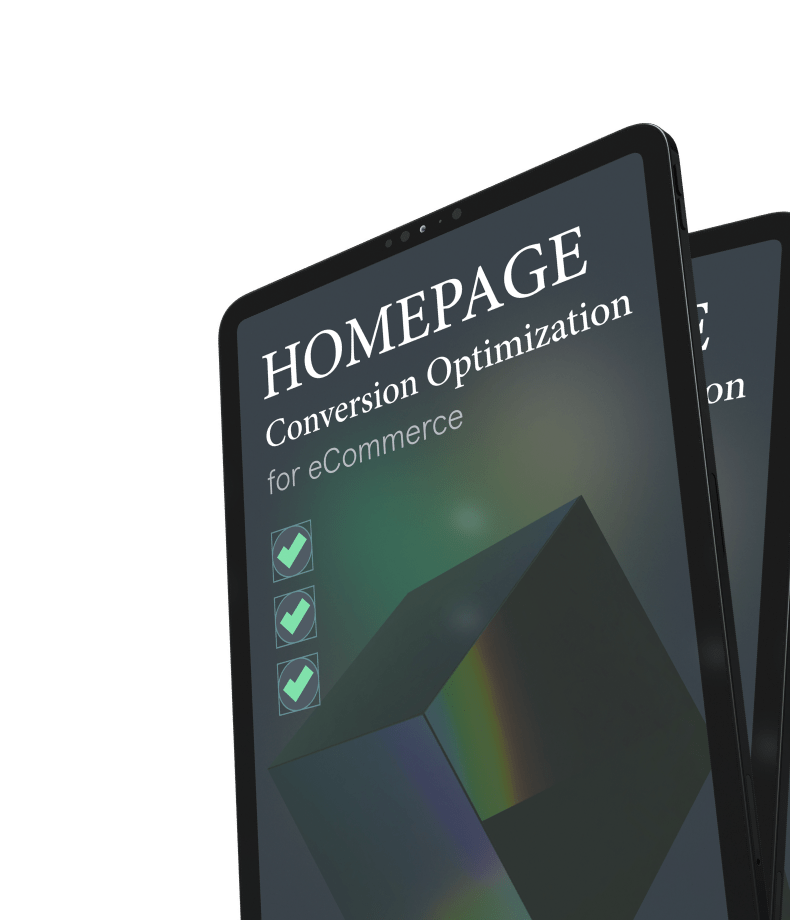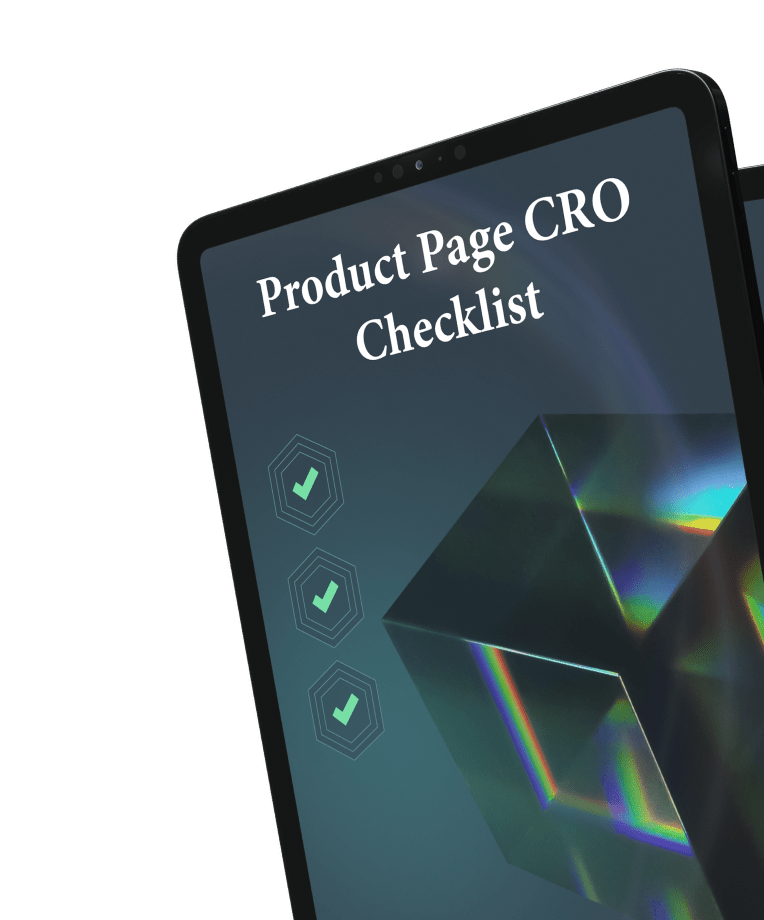It’s estimated that there are over 26 million eCommerce stores and sites globally. With this astounding number, how can you ensure your online store doesn't get lost in the noise?
The answer lies in harnessing the power of Search Engine Optimization (SEO). From attracting eager customers to achieving higher visibility in search engine rankings, mastering eCommerce SEO best practices is the key to unlocking untapped success. In this article, we’ll take a look at 10 eCommerce SEO best practices that will help you get your online store to the forefront of the digital landscape.
Read on.
What is eCommerce SEO?
eCommerce SEO, or eCommerce Search Engine Optimization, is the practice of optimizing online stores or websites to improve their visibility and rankings in search engine results pages (SERPs). It involves implementing various strategies and techniques to enhance a website’s structure, content, and relevance to specific search queries. The ultimate goal of eCommerce SEO is to attract organic (non-paid) traffic from search engines and convert those visitors into customers.
Why is eCommerce SEO important?
By optimizing their websites, online stores can increase their visibility, organic traffic, and ultimately, their sales and revenue. eCommerce SEO allows businesses to target specific keywords and phrases that align with their products or services, ensuring that their offerings are showcased to the right audience at the right time. Moreover, effective SEO practices improve user experience, site performance, and overall website quality, leading to higher customer satisfaction and increased brand credibility.
10 eCommerce SEO best practices
Now that you understand what eCommerce SEO is and why it’s of paramount importance for your eCommerce business, it’s time to explore the top proven ways to maximize your SEO efforts.
#1 Start with relevant keywords
Keywords are the phrases people use when searching online, and they are essential for attracting potential customers to your website. It is important to choose the right keywords and strategically incorporate them into your website to signal to search engines like Google what each page is about. Rather than targeting multiple keywords for a single page, it is better to focus on one or two relevant terms per product, page, or category.
To determine the appropriate keywords, start by brainstorming a list of related terms based on your offerings. Analyzing data from tools like Google Analytics can also provide valuable insights into the keywords people are already using to find your website. As you narrow down your keyword choices, consider becoming more specific by emphasizing unique products or differentiators. Additionally, strike a balance between search volume and competition, selecting keywords with high search volume that are achievable for your website to rank.
Understanding user intent is crucial, as it helps align keywords with the goals of potential customers. By focusing on keywords that indicate purchase intent, you can improve the effectiveness of your SEO strategy and drive more conversions.

#2 Avoid complicated, cluttered URLs
When it comes to optimizing your website for search engines, one crucial aspect to consider is the structure and cleanliness of your URLs. Complicated, cluttered URLs not only make it difficult for search engines to understand your website’s content but also confuse and deter users.
To enhance your website’s SEO and user experience, here are some examples of how to avoid cluttered and complicated URLs:
- Avoid unnecessary parameters
Instead of using long URLs with multiple query parameters, strive for clean and concise URLs that are easy to read and understand. For example, instead of www.example.com/product.php?id=123&category=456 use a simplified version www.example.com/product/123.
- Remove irrelevant words and numbers
Keep your URLs focused on the main content or topic of the page, and eliminate any unnecessary words or numbers. For instance, instead of www.example.com/blog/post-2023-07-12-how-to-choose-the-best-laptop-for-gaming simplify it to www.example.com/blog/choose-best-laptop-gaming.
- Use hyphens as separators
When separating words in your URLs, it’s best to use hyphens rather than underscores or other special characters. Hyphens are more readable and recommended by search engines. For example: www.example.com/product/large_blue_shirt.
- Keep it lowercase
To maintain consistency and prevent confusion, it’s advisable to use lowercase letters in your URLs. Mixing uppercase and lowercase can lead to duplication of content and affect SEO. For instance: www.example.com/category/electronics.
- Shorten subdirectories
If your website has deep subdirectories, try to keep them concise and avoid excessively long paths. For instance: www.example.com/category/subcategory/subsubcategory/product-name.
#3 Use alt text for images
Alt text provides a descriptive snippet of information about an image’s content. Initially designed to aid the blind and visually impaired, alt text serves the important purpose of conveying the image’s meaning when read by a screen reader, enhancing their browsing experience. Beyond accessibility, alt text plays a crucial role in ensuring that search engines properly interpret and recognize your website’s images when analyzing your content in response to a search query. By including relevant alt text, you can optimize your images for better visibility and recognition in search engine results.
When writing alt text, avoid keyword stuffing. Keep them short and descriptive and focus on 1 or 2 relevant keywords. This will improve accessibility and your chances in ranking in image search as well.
Integrations Automate eCommerce processes with Magento integrations: ERP, CRM, analytics systems, payment gateways, marketing automation solutions and any other tool you need to sell more.

#4 Create effective product descriptions
Product pages should go beyond basic information like price, photo, and title. They should include a comprehensive description that effectively promotes the item to both shoppers and search engines. Start by considering the kind of information that potential customers would find valuable. Depending on your products, this could involve details such as size, ingredients, target age group, or usage instructions.
Next, focus on being descriptive and specific. If applicable, incorporate the chosen keywords for each individual product page. However, avoid keyword stuffing and instead integrate them naturally within your existing content.
For instance, suppose you offer gourmet caramel popcorn. Instead of writing a bland description like “We sell gourmet caramel popcorn. Our gourmet caramel popcorn is made with the finest quality ingredients. To purchase our gourmet caramel popcorn, click the button below.” you could write something like “Indulge in our delectable gourmet caramel popcorn, a blend of handcrafted caramel and air-popped corn. Each bite delivers a perfect harmony of sweetness and crunch, leaving you craving for more.”
This type of description seamlessly incorporates the keyword while painting a vivid picture of the sensory experience of enjoying the popcorn.
#5 Create customer-focused design
It’s crucial to ensure that your website and product page design enhances the shopping experience rather than detracting from it. Regardless of offering top-notch products at competitive prices, if your website is difficult to navigate or lacks a functional search feature, potential customers may become frustrated and leave.
Design plays a significant role in SEO as well. If search engines detect a high bounce rate on your website, indicating that visitors are quickly leaving after accessing a page, it can negatively impact your rankings. A well-designed website helps reduce bounce rates and encourages visitors to explore additional pages, even if they don’t find what they’re looking for immediately.
To create an optimal ecommerce website, prioritize easy navigation with clear menus or navigation options that provide a clear indication of the content visitors will find upon clicking. Additionally, use images sparingly to prevent long load times, which can lead to impatient shoppers hitting the back button. It’s worth noting that load time is also a ranking factor, making it essential to prioritize fast page loading.
If you’re unsure where to begin when designing a new website, take inspiration from your favorite (or least favorite) websites. Analyze their design and navigation to identify what you appreciate and what you dislike. This exercise can provide valuable insights into what your shoppers might prefer to see on your own online store.
Web Design Create a visually captivating and highly functional online store that drives conversions and sets you apart from the competition.

#6 Ensure there’s no duplicate content
To maintain a strong SEO presence for your website, it is crucial to ensure that you avoid duplicate content. Duplicate content refers to identical or substantially similar content that exists on multiple pages within your website or across different domains. Search engines strive to deliver the most relevant and diverse results to their users, so they typically favor unique and original content.
Having duplicate content can lead to various issues. First, it can confuse search engines when determining which page should rank higher in search results, potentially resulting in lower visibility for your website. Additionally, it can dilute the authority and credibility of your content, as search engines may not know which version to prioritize.
To address this, perform regular content audits to identify any instances of duplicate content. You can utilize tools like Google Search Console or specialized SEO software to detect duplication across your website. Once identified, take appropriate action to resolve the issue.
There are several strategies to deal with duplicate content. One approach is to consolidate similar content into a single authoritative page. For instance, if you have multiple blog posts covering the same topic, consider merging them into a comprehensive guide. Another method is to use canonical tags, which indicate the preferred version of a webpage to search engines. This helps consolidate ranking signals and directs search engines to the primary page.
In addition, ensure that any syndicated content or cross-posted articles on other websites include a canonical tag pointing back to the original source. This helps avoid confusion and ensures that credit is given to the originating page.
Development Get a robust PWA
Supercharge your eCommerce efforts with superb UX and ‘superfast’ speed. Build an eCommerce PWA from scratch or save time and money using GoPWA Storefront.

#7 Optimize anchor text with strategic keywords
Anchor text refers to the clickable text within a hyperlink. It is the visible and underlined text that users click on to navigate to another web page or resource. Anchor text provides context and tells search engines about the content of the linked page.
Internal links, which connect to other content within your website, hold significant SEO value. They assist search engines in comprehending the interrelationships among your web pages. However, when creating these links, avoid using generic phrases like “click here” or “check this out” as your anchor text. Instead, whenever relevant, incorporate your targeted keywords.
For instance, rather than stating “click here to explore our new collection of summer dresses,” opt for “our new collection of vibrant summer dresses is perfect for your sunny adventures!” This approach not only enhances the user experience but also signals to search engines the relevance and topic of the linked content.
#8 Speed your eCommerce site
You might lose up to 25% of shoppers if your site doesn’t load within 4 to 6 seconds. A fast-loading website not only improves customer satisfaction but also plays a significant role in SEO rankings. Search engines prioritize websites that deliver content quickly and efficiently to users.
Speeding up your website is crucial for a successful online presence and optimal user experience. A fast-loading website not only improves customer satisfaction but also plays a significant role in SEO rankings. Search engines prioritize websites that deliver content quickly and efficiently to users.
To enhance the speed of your website, consider implementing the following strategies:
- Optimize your images by compressing them without compromising quality.
Large image files can significantly slow down page load times. Next, enable browser caching to store frequently accessed resources on the user’s device, reducing the need for repeated downloads.
- Minimize the use of external scripts and plugins.
Each additional script or plugin adds to the load time, so evaluate and remove unnecessary ones. Additionally, leverage browser caching and content delivery networks (CDNs) to distribute your website’s content across various servers worldwide, reducing the distance between the user and the server.
- Consider optimizing your website’s code and minimizing CSS and JavaScript files.
By reducing the file size and eliminating unnecessary code, you can significantly improve load times. Additionally, enable compression for your website files using techniques like GZIP compression to reduce the overall size of transferred data.
Regularly monitoring your website’s speed and performance is essential. Utilize tools such as Google PageSpeed Insights to assess your website’s speed and identify areas for improvement. These tools provide valuable insights and suggestions for optimizing your website’s performance.
Optimization Sell more effectively with a fast Magento website and blow your competition out of the water.

#9 Avoid broken links
Avoiding broken links is crucial for maintaining a smooth user experience and optimizing your website’s SEO. Broken links occur when a hyperlink leads to a page or resource that no longer exists or has been moved. These broken links can frustrate visitors and hinder their ability to navigate your website effectively.
From an SEO perspective, broken links can negatively impact your search engine rankings. Search engine crawlers view broken links as a sign of poor website maintenance and may interpret them as a lack of quality content. This can result in lower visibility and reduced organic traffic to your site.
To prevent broken links, regularly audit your website and check for any broken or outdated links. Utilize tools like Google Search Console or specialized link-checking tools to identify and resolve broken links. When updating or restructuring your website, ensure that any existing links are properly redirected to the new URLs using 301 redirects. This preserves the link equity and ensures a seamless user experience.

#10 Display reviews
By leveraging reviews effectively, you can optimize SEO, ultimately improving your search rankings and boosting customer engagement.
Here are the three ways customer reviews enhance SEO:
- Reviews optimize long-tail keyword rankings
Long-tail keywords, consisting of three or more specific words, align with user search intent and can lead to higher conversion rates. Reviews naturally contain these long-tail keywords as customers describe their purchases. This increases the likelihood of your page being discovered by potential customers using similar search language. Additionally, reviews contribute to building trust, and search engines often trust customer opinions more than website content.
- Reviews generate fresh content for search engines
Search engines value fresh content, as it demonstrates your website’s activity and relevance. Reviews offer an effective means of incorporating fresh content and keywords on your site. Search engines consider factors such as quantity, quality, diversity, and frequency of product reviews. Regularly receiving high-quality reviews enhances your chances of ranking well compared to a page with outdated or fewer reviews.
- Reviews drive website traffic
The majority of shoppers initiate their product searches online, relying on search engines to deliver relevant results. With thousands of options, it is crucial to capture their attention and entice them to click through to your website. Reviews displayed prominently in search results make your entry more appealing, increasing the likelihood of attracting clicks. Positive reviews also contribute to higher consumer knowledge and brand trust, leading to longer browsing sessions and a reduced bounce rate.
Final thoughts
The common thread among the tips mentioned here is their emphasis on prioritizing real people. Search engines aim to deliver the most relevant and valuable results to their users. By dedicating your efforts to understanding and satisfying your audience, you can significantly enhance your search engine optimization.







